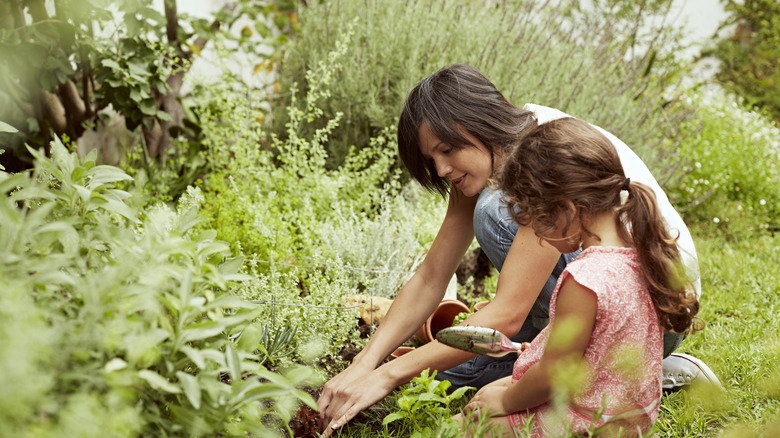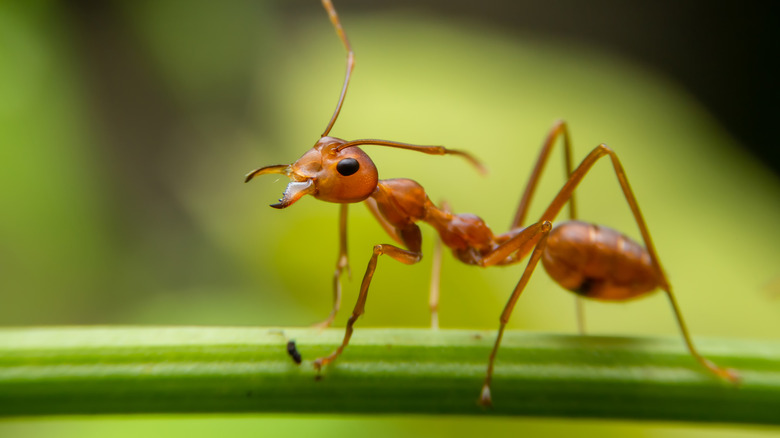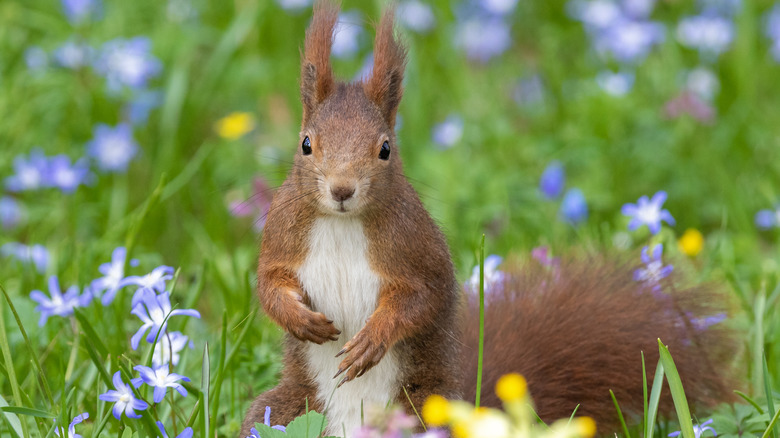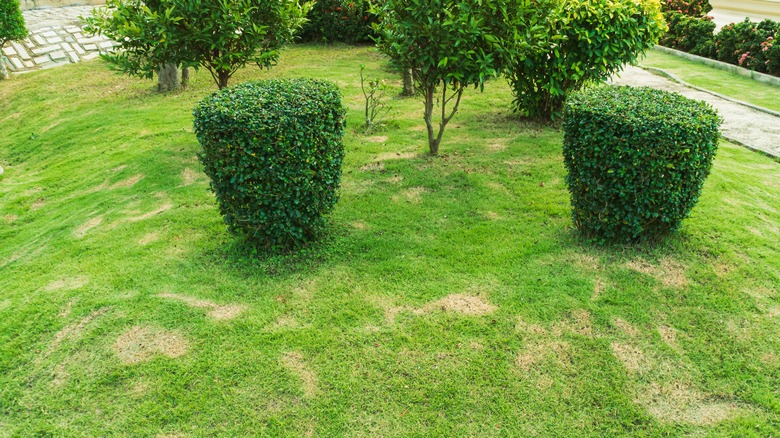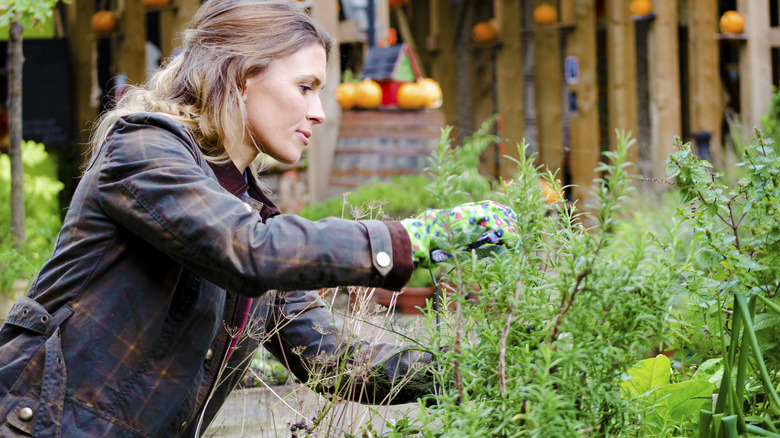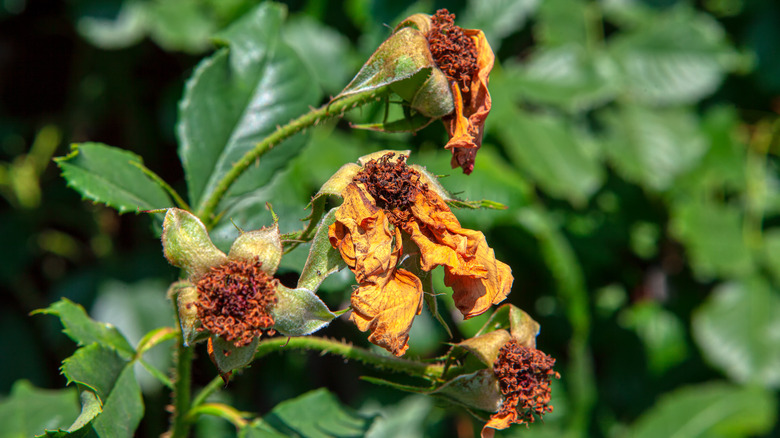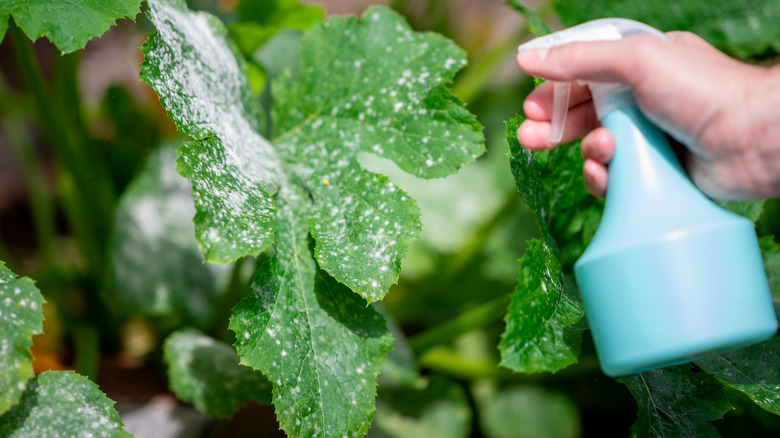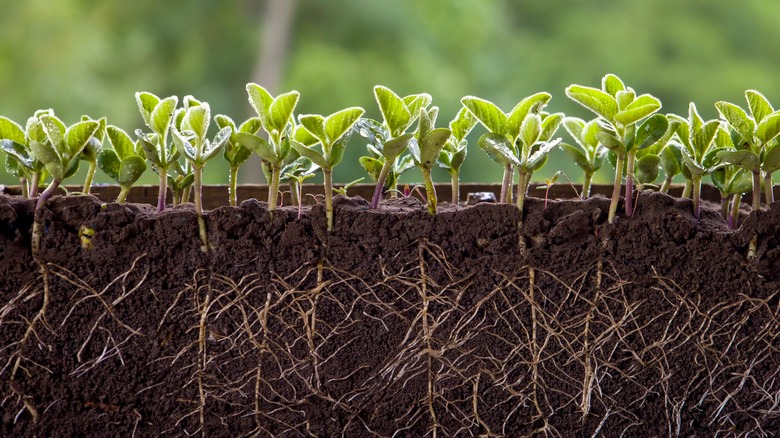All The Ways You Should Be Using Cinnamon In Your Garden
If you're a gardener, whether for food or just for fun, omitting harmful pesticides is something you should seriously consider. Not only could they make their way into the food you are consuming, but some can be harmful to the environment. The good news is that there is a non-toxic, highly effective option that will do wonders for your garden, and you probably already have it in your spice cabinet — cinnamon.
The warm and comforting spice is made by peeling the bark off of a cinnamon tree, drying it, and then rolling it into sticks. The sticks can then be ground up into a powder and used in various ways from adding warmth to baked goods to repelling pests. And, what you may not know, is that you can, and should, be using cinnamon in the garden too! Let's look at all the ways the kitchen staple can help your plants thrive.
Use as an eco-friendly pesticide
Is there anything more frustrating than having your garden taken over by ants and insects? Seeing harmful bugs crawling all over your blooms and veggies can be disheartening. While you want to get rid of them, you may not want to use harmful chemicals, especially on the veggies you plan to eat. While there are mixed reviews on its effectiveness, many pest control experts like Orkin say the unique scent of cinnamon will deter common garden pests that can cause damage to your plants. Ants, especially, do not like the smell of the spice, so they tend to stay away from it.
Before you do anything, make sure to identify the type of pests you see since some can be helpful. For example, black ants actually benefit the garden by providing nutrients, promoting pollination, and aerating the soil. Others, like the dark red leafcutter ants, can completely destroy your hard work and need to be taken care of. Once you've determined you're dealing with a harmful pest, try adding a sprinkle of cinnamon to the ant's pathway to hopefully handle the problem.
Prevent squirrels and moles from wreaking havoc on your plants
Have you ever walked out to harvest some vegetables only to find something had already taken a few nibbles? The culprit? Likely a squirrel or a mole. These animals might be cute, but they are not who you want to see in your yard. They can dig holes and tunnels, ruining the aesthetic and eventually killing your plants. Removing them yourself can lead to aggression from the animals which could potentially expose you to disease. Luckily, some wildlife control professionals say these little critters don't like the smell of cinnamon, so before you go out and buy traps or other inhumane deterrents, you can try taking advantage of cinnamon's repelling forces first.
In order to utilize the power of the popular kitchen staple and save your garden from squirrels, create a simple mixture of 2 teaspoons of cinnamon and 4 cups of water. Then, spray this combination onto the area that is being harmed. You can also use bundles of cinnamon sticks. Just tie a few together and strategically place them around the edges of your garden to create an aromatic border.
Make your lawn thrive
Most homeowners dream of a yard with lush, beautiful green grass. However, that picture-perfect lawn is not easy to attain. You will likely encounter invasive weeds, brown spots, and uneven growth patterns. While cinnamon can't fix all of these problems, if the issues with your lawn are being caused by fungal diseases, the super spice might be able to help. Scientific research studies have determined that cinnamon can be effective against many fungal strands and many gardeners swear by using the kitchen staple on their lawns.
To get your lawn healthy and looking its best, mix up about 4 tablespoons of cinnamon and a gallon of water. Take that mixture outside and spray it on the brown spots or areas that look like they're being hindered by fungus. As a bonus, the spice can also repel mosquitos so your grass will also be a less likely place for an infestation.
Protect your plants after pruning
Pruning helps encourage flower and vegetable growth, removes dead or diseased growth, and keeps plants from becoming too overgrown. This crucial activity involves cutting off stems or branches of plants, and while important, it does create an open wound that leaves the greenery vulnerable to infection. With the help of a thin layer of cinnamon to act as a protective barrier, plants are less susceptible to getting a bacterial or fungal infection. This is because, as studies have shown, cinnamon has microbial properties that block pathogens from entering the plant tissues. That means that this extra step can protect your pruned plants from disease while allowing them to heal and regrow.
For your final step in the pruning process, head over to the spice rack! Sprinkle the cinnamon onto the ends of the plant, and the powder will create a barrier that will prevent diseases from harming the stems. A simple way to apply this is to pour a few teaspoons into a bowl and use a small, soft paintbrush to target the cut edges. You can also mix the powder with a few drops of water to make a stickier substance that can be smeared onto the exposed parts.
Mix with milk to revive sick plants
Tending to a garden takes a lot of time, and with life being so busy, sometimes we can't give our leafy friends the attention they need. If you've noticed that your plants have spots caused by fungus or are starting to turn yellow, try creating a magical elixir that will revive your struggling shrubs and flowers. Many gardening experts claim that milk's calcium and vitamin B help plants grow stronger and fight disease. This makes it perfect to partner with cinnamon's fungal-fighting properties.
You only need a few spoonfuls of cinnamon along with one gallon of milk to create this nourishing bath. Make sure the spice is finely ground and thoroughly mixed with the milk. Running it through a blender can emulsify it into a consistent mixture. Then, pour it into a spray bottle and give your plant a good soak. Make sure to apply the solution directly onto the affected areas on both sides of the leaves. This easy and affordable cure for plant illness is non-toxic and a great way to use up expired milk.
Prevent fungal growth
Fungal diseases are a huge threat to vegetable crops and can destroy all of the hard work you've invested in your garden. The fungus can stem from a number of places, including seeds, soil, weeds, and other vegetables in the garden. Worst of all, it can spread through wind and water, and having even the smallest amount of fungus in your garden can lead to significant problems. Squash, cucumbers, and pumpkins are highly susceptible, and can quickly fall victim to an aggressive infestation. Luckily, cinnamon can also help keep fungus out of your garden. The spice's antifungal properties allow you to help your veggies without resorting to chemically-based measures.
Fungus is aggressive in the right conditions and once it gets into your garden's soil, it can take over quickly. So, you can sprinkle the cinnamon directly on the soil around the roots to kill or prevent various types of fungi. In periods of high humidity, you can also work the cinnamon gently into the soil for a more thorough approach.
Use as a rooting hormone
Propagating healthy plants is an excellent and cost-effective way to expand your garden. Taking the cuttings of certain perennials or shrubs and then planting them in potting soil should encourage new root growth to occur, but sometimes they need some extra help. Instead of using chemical rooting hormones, why not use an all-natural alternative? Studies show that auxin, a hormone in cinnamon, contains properties that can help plants increase their levels of growth. It also has an antibacterial agent that works as a fungicide to help the vulnerable cuttings fight off any risk of infection.
Once you've collected your cuttings, there are several ways to apply the cinnamon. You can make a slurry by mixing some of the spice into a cup of water and soaking the roots for a little bit before replanting. Or, gently roll the roots in the powder and then plant them. And, if propagated plants are already in the soil, simply work some of the cinnamon into the growing medium.
